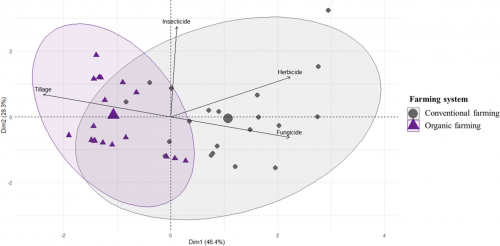A recently published article in the Scientific Reports journal analyses how certified organic farming and conventional farming affect the quantity and taxonomic richness of several species groups in vineyards.
The authors of the article discovered that field-scale farming techniques are more important determinants of community abundance than landscape environment. Moreover, organic farming increased the number of springtails and spiders by 31.6% and 84%, respectively, but had negative impacts on pollinator abundance (-11.6%) and soil microbial biomass (-9.1%), while having no influence on the number of ground beetles, mites, or microarthropods.
The scientists suggest that different farming practices like tillage regime, insecticide use and soil copper content drove most of the detected effects of the farming system on biodiversity which, on the other hand, makes the study relevant to the aims of SHOWCASE - to integrate biodiversity into farming practices.
The paper titled “Multi-community effects of organic and conventional farming practices in vineyards” shows that organic farming has variable effects on biodiversity and emphasises the need of considering agricultural practices when studying farmland biodiversity.
You can read more about the methods and findings of the research here.
Photo: Principal component analysis (PCA) of the four variables used to characterise profiles of agricultural practices in our study. Purple triangles represent plots under organic systems, and grey circles, systems under conventional farming. The largest triangles and circles represent centroids of the ellipses characterising organic and conventional farming systems, respectively.
